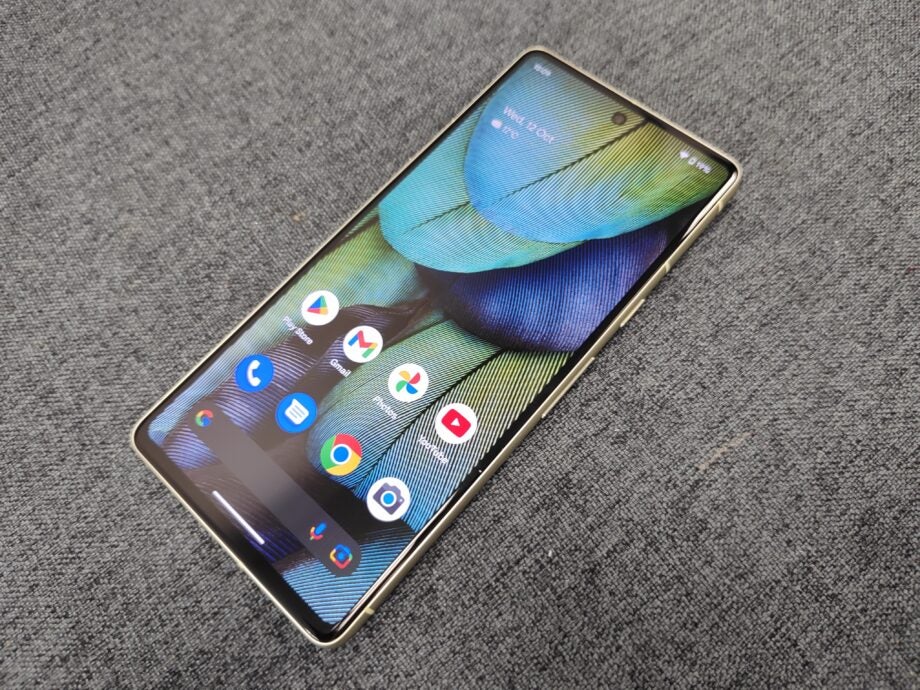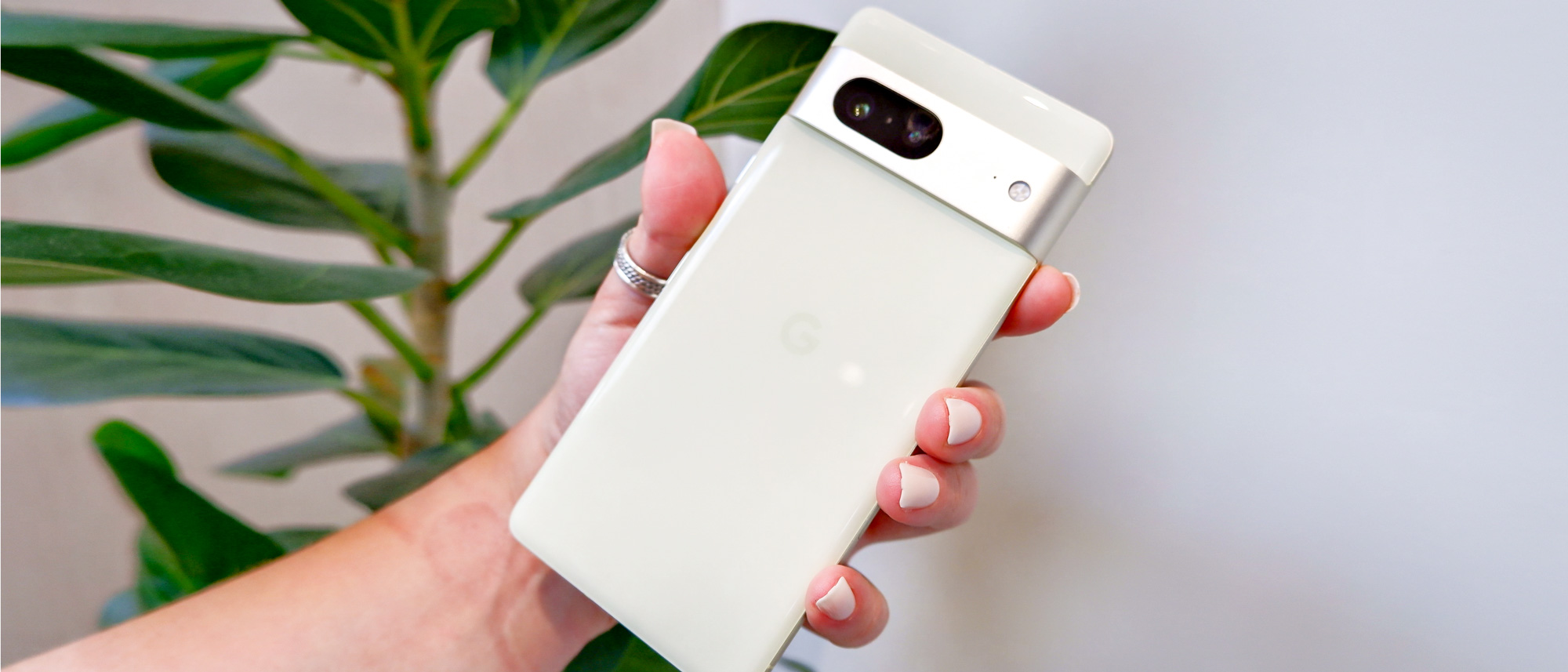Google Pixel 7 er en budsjettvennlig telefon som tilbyr en flott brukeropplevelse og nyttige funksjoner. Les vår grundige gjennomgang for å utforske design, ytelse, kameraegenskaper og mer.
Innholdsfortegnelse
Introduction
Google Pixel has come a long way from being considered "nerd phones" to becoming popular among consumers worldwide. The latest addition to the Pixel lineup is the Google Pixel 7, a budget-friendly option that offers a great user experience and useful features. In this expert review, we will take an in-depth look at the Pixel 7 and explore its design, performance, camera capabilities, and more.

Design and Build
The Google Pixel 7 shares many similarities with its sibling, the Pixel 7 Pro, in terms of design. It features a glass front and back, with water resistance similar to the Pixel 7 Pro. The phone has a sleek and modern look, although the protruding camera bump can make it slightly unstable when placed on a flat surface. The Pixel 7 is available in a single color option, maintaining a minimalist aesthetic.

Display
The Pixel 7 sports a 6.3-inch FHD+ OLED display with a resolution of 2400x1080 pixels and a 20:9 aspect ratio. While it may not offer the high refresh rate found in the Pixel 7 Pro, the display is still vibrant and provides a satisfactory viewing experience. The touch response is smooth, making it enjoyable to navigate through the user interface.
Se også
Performance
Powering the Pixel 7 is the second-generation Google Tensor chip, which ensures smooth performance and efficient multitasking. While it may not compete with other flagship processors in benchmark tests, the Tensor chip focuses on AI and machine learning, enhancing various aspects of the user experience. The phone runs on Android 13, providing a seamless and user-friendly interface.

Camera
The Pixel 7 comes with a 50-megapixel wide rear camera and a 12-megapixel ultra-wide rear camera. While it lacks the additional telephoto lens found in the Pixel 7 Pro, the camera setup still delivers impressive results. Google's image processing algorithms and computational photography capabilities ensure excellent photo quality, even in challenging lighting conditions. The front camera features a 10.8-megapixel ultra-wide lens, perfect for capturing stunning selfies.

Battery and Storage
With a 4,355mAh battery, the Pixel 7 offers reliable battery life for daily usage. It supports fast charging, Qi wireless charging, and reverse wireless charging, providing flexibility and convenience. The phone is available in two storage options - 128GB and 256GB, ensuring ample space for your apps, photos, and videos.
Se også
Conclusion
The Google Pixel 7 may not have all the features of its higher-end counterpart, the Pixel 7 Pro, but it offers exceptional value for money. Its sleek design, impressive camera capabilities, smooth performance, and reliable battery life make it an excellent choice for budget-conscious consumers. Google continues to refine its Pixel lineup, delivering a compelling smartphone experience that appeals to a wide range of users.

Hva vil Wiki fortelle oss?
The Pixel 7 and Pixel 7 Pro are a pair of Android smartphones designed, developed, and marketed by Google as part of the Google Pixel product line. They serve as the successor to the Pixel 6 and Pixel 6 Pro, respectively. The phones were first previewed in May 2022, during the Google I/O keynote. They are powered by the second-generation Google Tensor chip, and feature a design similar to that of the Pixel 6 series. They shipped with Android 13.
The Pixel 7 and Pixel 7 Pro were officially announced on October 6, 2022, at the annual Made by Google event, and were released in the United States on October 13. They were succeeded by the Pixel 8 and Pixel 8 Pro in 2023.
The Pixel 7 and Pixel 7 Pro both feature the two-tone back color scheme and large camera bar introduced in the Pixel 6 and Pixel 6 Pro, with the camera bar now made of aluminum. The front of the phones also retain the Pixel 6 series' centered hole-punch display notch. They are each available in three colors.
The Pixel 7 has a 6.3 in (160.5 mm) FHD+ 1080p OLED display at 416 ppi with a 2400 × 1080 pixel resolution and a 20:9 aspect ratio, while the Pixel 7 Pro has a 6.7 in (170 mm) QHD+ 1440p LTPO OLED curved-edge display at 512 ppi with a 3120 × 1440 pixel resolution and a 19.5:9 aspect ratio. The Pixel 7 has a 90 Hz refresh rate while the Pixel 7 Pro has a 120 Hz variable refresh rate. Both phones contain a 50 megapixel wide rear camera and a 12 megapixel ultrawide rear camera, with the Pixel 7 Pro featuring an additional 48 megapixel telephoto 5× optical zoom rear camera. The front camera on both phones contains a 10.8 megapixel ultrawide lens.
The Pixel 7 has a 4355 mAh battery, while the Pixel 7 Pro has a 5000 mAh battery. Both phones support fast charging, Qi wireless charging, as well as reverse wireless charging. The Pixel 7 is available in 128 or 256 GB of storage and 8 GB of RAM, and the Pixel 7 Pro is available in 128, 256, or 512 GB of storage and 12 GB of RAM. In addition to the second-generation Tensor chip, both phones are also equipped with the Titan M2 security module, along with an under-display optical fingerprint scanner, stereo speakers, and Gorilla Glass Victus.
The Pixel 7 and Pixel 7 Pro shipped with Android 13 and version 8.7 of the Google Camera app at launch. It will receive at least three years of major OS upgrades with support extending to 2025, and at least five years of security updates with support extending to 2027. In addition to enhancements to Night Sight and Real Tone, camera features introduced on the Pixel 7 and Pixel 7 Pro include Guided Frame, Photo Unblur, and Cinematic Blur. A macro photography mode is also available on the Pixel 7 Pro to accompany its additional telephoto lens, as are upgrades to Super Res Zoom. The Direct My Call feature and Recorder app both received performance upgrades, while Google announced that its VPN service from Google One would be bundled with the Pixel 7 series at no additional charge. The Pixel 7 and Pixel 7 Pro only run apps that have 64-bit binaries, the first Android smartphones with such a restriction. As part of a partnership with Google, Snapchat and TikTok announced support for 10-bit HDR video on the Pixel 7 series.
Following the Pixel 7 and Pixel 7 Pro's reveal at the 2022 Google I/O, Sean Hollister of The Verge praised Google's development of a distinctive Pixel design language with the continuation of the Pixel 6 and Pixel 6a's camera bar. Both phones were well received after their launch. Julian Chokkattu of Wired and Max Buondonno of CNN Underscored lauded the phones' competitive pricing, displays, and camera capabilities. Dave LeClair of PCMag commended the Pixel 7's price and performance, while praising the Pixel 7 Pro's display and photography-related features. Gizmodo's Florence Ion acclaimed the phones' camera system, and Marques Brownlee highlighted their software features. Mark Knapp and Kevin Lee of IGN viewed the phones as marginally superior to the Pixel 6 series, but praised Google's refinements nonetheless. The Verge's Allison Johnson concurred, but found some of the new AI features "underwhelming". Lisa Eadicicco and Andrew Lanxon of CNET hailed the phones' incremental improvements as a reflection of Google's successful product formula, praising their design and features but criticizing the battery life. Engadget reviewer Sam Rutherford had a more positive experience with battery life, also praising the phones' upgraded designs. Mashable's Alex Perry eulogized the larger phone's camera, but had reservations about the smaller Pixel 7 and lamented the loss of the Pixel 6 series' two-toned back design. Writing for TechRadar, Alex Walker-Todd applauded the Pixel 7's design and camera, while his colleague Philip Berne had mixed feelings about the Pixel 7 Pro's software features.
During Google parent company Alphabet's quarterly earnings investor call in February 2023, Google and Alphabet CEO Sundar Pichai touted the Pixel 6a, 7, and 7 Pro as Google's "best-selling generation of phones", allowing Google to gain market share in all of its markets. Additionally, a survey conducted by market research firm Wave7 in January 2023 further indicated that the Pixel 7 series, especially the Pro model, experienced stronger numbers than the Pixel 6 series. The Pixel 7 series, alongside the Pixel 6a, were principally responsible for the Pixel's 87 percent year-over-year growth globally. Data from the International Data Corporation showed that Google sold around 10 million Pixel phones during the 2022–2023 fiscal year.

